Home, Home on the Prairie
July 2023 American Prairie Discovery Center - Lewistown, Montana #46-2023
NATUREDISCOVERIES
AL
8/10/2023
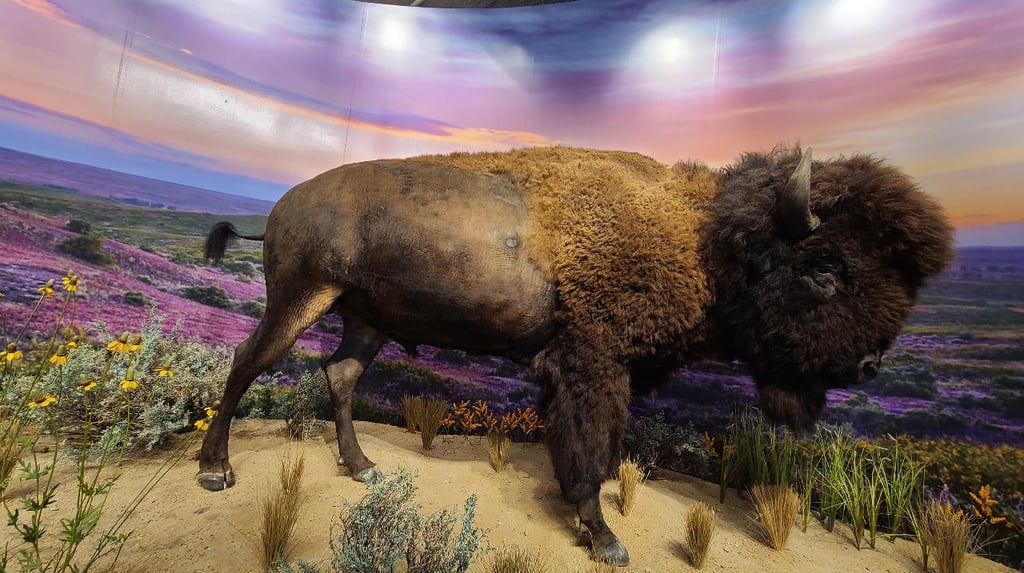

We learned of American Prairie as they owned Antelope Creek Campground where we stayed. They have a Discovery Center, in the heart of Lewistown, that has a large exhibit area where I spent a couple hours absorbing all the information presented about the prairie and life there. The first thing you see is a bison and a pronghorn on display. They are vital components of a healthy prairie ecosystem and of great importance to people and civilizations that have called the Montana prairie home. Around the corner is a visual timeline detailing how people have used the prairie and its resources from prehistoric to modern times. It includes the good, the bad, and the ugly. Admittedly, we have not always been the best stewards of our resources, and part of the mission of the Discovery Center is to help us understand all the components that make up a heathy prairie.
As I walked around reading and looking at all the displays, I kept thinking to myself, I didn’t know that, and I am guessing you didn’t either.
Did you know there are only four regions remaining in the world where temperate grasslands are intact enough to sustain meaningful ecological conservation and biodiversity. The prairie of Montana is one of them. The goal of American Prairie is to preserve 5.5 percent of the Montana prairie as a fully functioning ecosystem. Considering that some biologists propose conserving half of earth’s land and sea, to ensure the survival of 85 percent of species, and the National Geographic Society proposes to protect 30 percent of the lands, the goal of American Prairie seems much smaller and doable.
Did you know that the prairie has three main natural landscape engineers. Prairie dogs keep the grasses short enabling new growth which is more nutritious and preferred by some grazers. They aerate the soil by digging their burrows, and their burrows make homes for other animals, like ferrets and owls. Bison wallow around creating depressions to hold water, which could eventually become a wetland, and use their large heads to clear snow in winter exposing vegetation for other grazers. Beavers build dams, slowing down water flow in streams allowing it to stay in the landscape longer, making for more diversity of plants and animals.
Did you know the prairie dog is considered a keystone species. More than a dozen other species depend on the prairie dog and its activities for survival. There is a display where you take one tile from among all the species and place it on a reader and it will show on the screen the ecological cascade of consequences if one species is no longer part of the ecosystem.
Did you know the prairie is more than the grasslands. Rivers, streams, wetlands, and island mountains all provide different habitats for various species that when combined make up the prairie ecosystem. Mountain lions, wolves, and grizzly bears used to live on the prairie and are slowly making their way back. The Little Rocky Mountains habitat is where they found refuge as the prairie was slowly consumed by grazing and crops. They are now ranging out from this hiding place onto the prairie again. American Prairie is working with local citizen and agencies to provide bear-proof containers and compensation for these species coming back to the prairie and the impact it might have to ranchers and their cattle.
American Prairie also encourages the use of wildlife-friendly fencing. Instead of four 12-inch spaced barb-wire fences, they recommend the lower wire at 18-inch non-barbed, 24-inch barbed, 30-inch electric, and 42-inch barbed with visibity tags. This method has been proven that domesticated livestock do not escape, while allowing wildlife to roam and migrate unharmed. While you would think that pronghorn would jump, their bodies are not designed for it, rather they can crawl under an 18-inch fence, but barbed-wire could cause injury and infection.
While American Prairie is doing many good things to improve and increase the prairie, many local ranchers still oppose them for the perceived change of their way of life. This is evident from the many signs you see on fences along the road declaring “Save the Cowboy - Stop American Prairie.”
Did you know that there are four major flyways in North America for bird and pollinator migration. One on the Pacific Coast, One on the Atlantic Coast, one along the Mississippi River, and one through the Great Plains. Birds and pollinators not only live here, but many rely on the prairie while migrating for forage, water, and rest.
The prairie doesn’t sleep at night, the owls, bats, swift foxes, black footed ferrets are nocturnal, while rabbits, mice and prairie dogs try to avoid detection. Dark sky nights are natural on the prairie, and you can experience it in a dedicated room here where the sounds and sights of night prairie come alive. We were fortunate enough to spend several nights out there and experienced it first hand.
Did you know the Montana Prairie is a climate of extremes. Temperature can fluctuate 40-50 degrees between day and night, and it can be as hot as 110 degrees in the summer and -50 degrees in the winter. Annual rainfall is only 12 inches and droughts are common. It is perpetually windy and there is always the threat of prairie fires.
Did you know prairie grasses like blue gramma, little bluestem, western wheatgrass, and dotted blazing star all have deep root systems, even up to 10 feet deep? This helps them survive during times of drought or overgrazing. They also have folliage developed to minimize evaporation. Wildflowers are dotted along the landscape to feed the pollinators that call the prairie home too.
After spending several days on the prairie I have come to appreciate, more and more, the sometimes severe landscape, and all the plants and animals that call it home. American Plains author Willa Cather said, as noted on one of the displays, “Anybody can love the mountains, but it takes a soul to love the prairie.” I can only hope that we all have that soul. The prairie and its inhabitants are worth preserving. I enjoyed the Discovery Center and appreciate learning all these things I did not know.
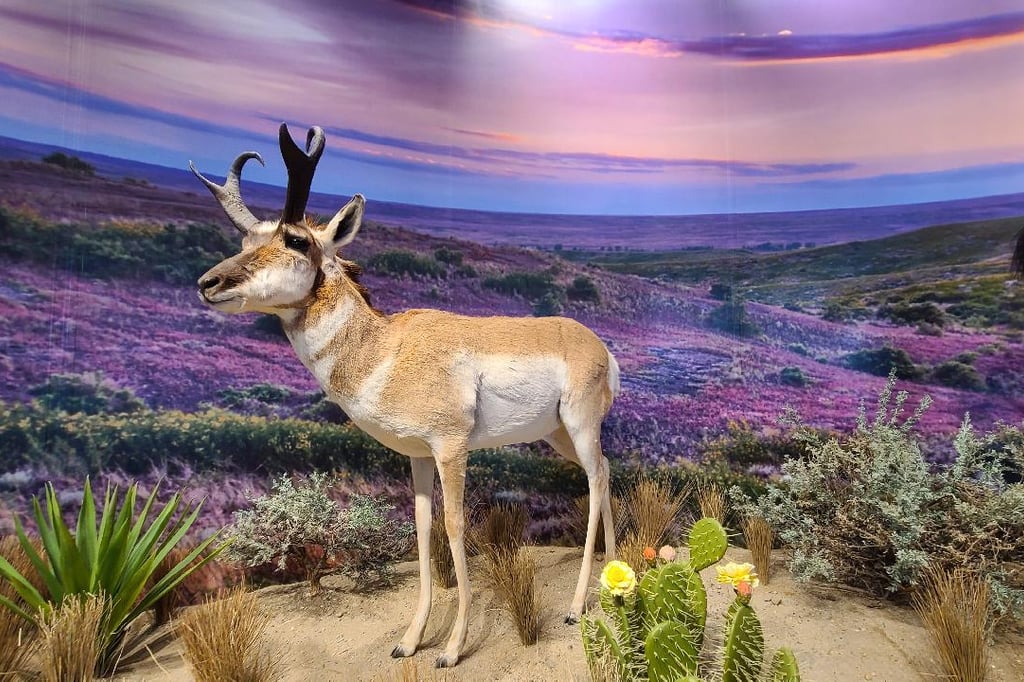

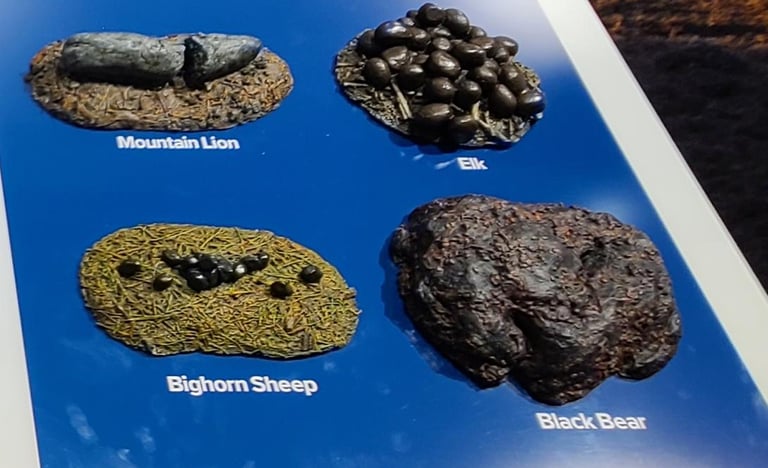

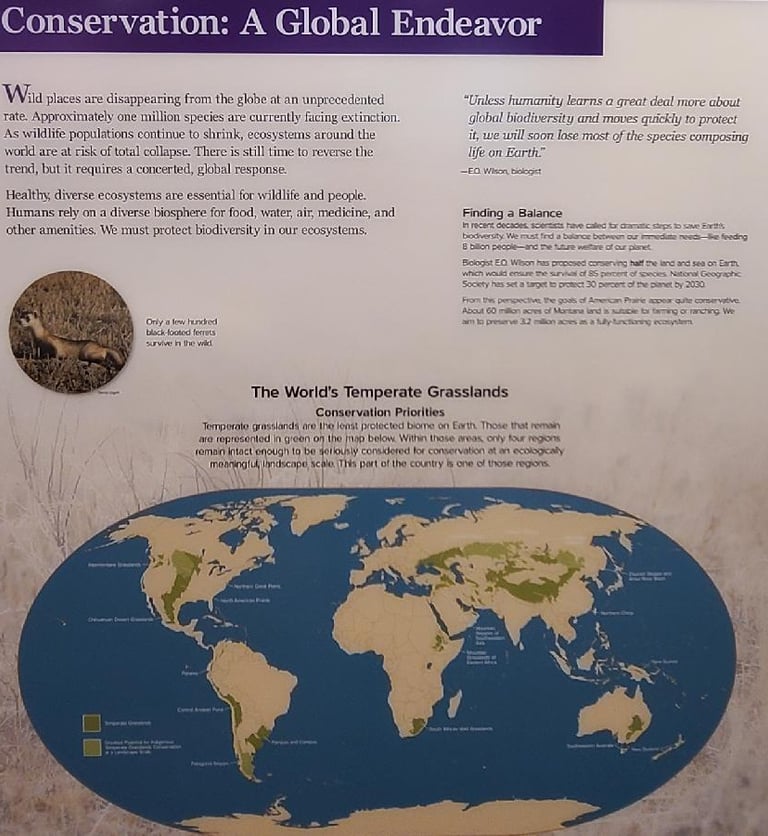



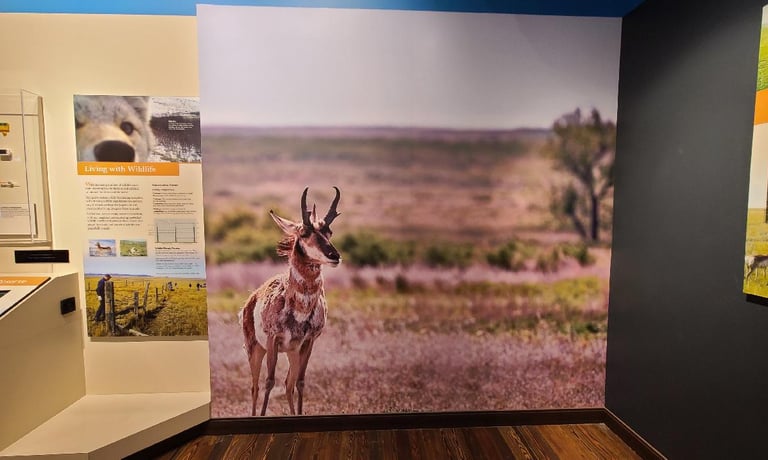

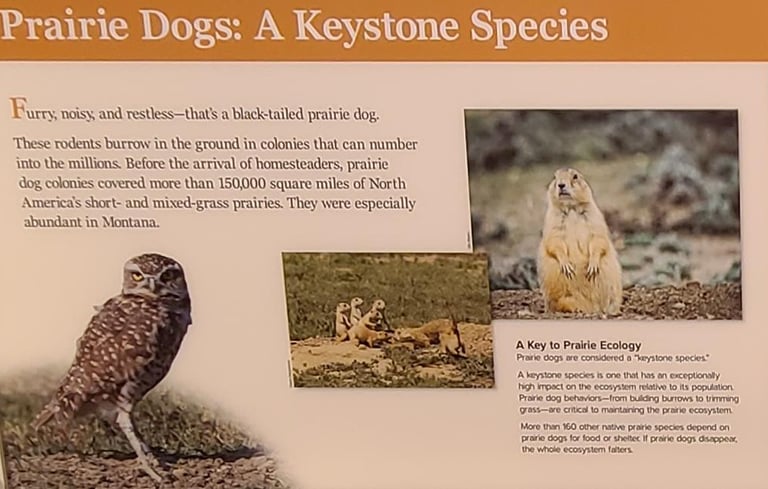

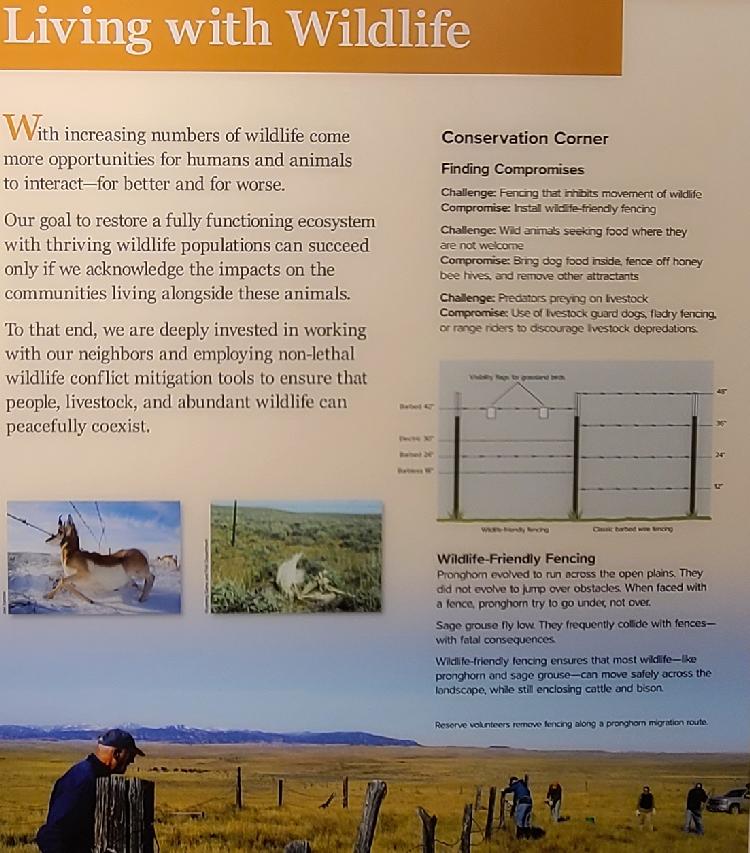

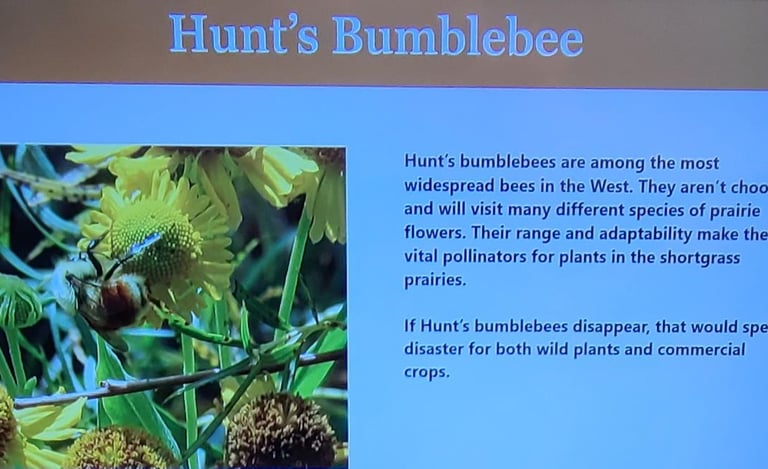



Share your comments on Facebook or email us at roadfronts@gmail.com
Subscribe for monthly updates
Current location:
